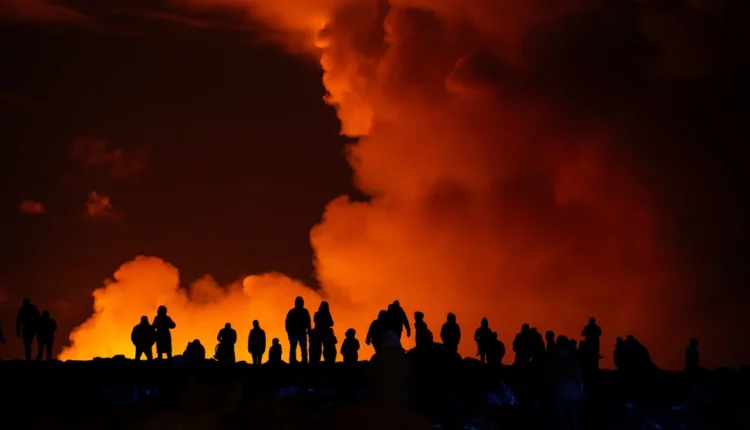Iceland’s world-famous Blue Lagoon and the nearby town of Grindavik were evacuated on Saturday following a volcanic eruption in the country’s Reykjanes Peninsula, Iceland’s public broadcaster RÚV reported.
Lava appeared to be flowing rapidly towards north of the town Grindavík, just as it did during the eruption on February 8, RÚV said citing the Icelandic Met Office. RUV later reported that lava was also flowing toward the Grindavíkurvegur road – the main road leading to Grindavik.
“The fissure is about three kilometers long [about 1.9 miles], and runs from Stóra-Skógfell towards Hagafell,” it said.
Iceland’s main international airport, Keflavik Airport, and other regional airports remain fully operational, RUV added. However, volcanic gas is expected to be detectable in the town near the airport on Sunday, RUV reported.
The current eruption is the most powerful in the recent sequence of seismic activity, geophysicist Magnús Tumi Guðmundsson told RUV after returning from a helicopter flight over the site.
Guðmundsson said the fissure, which is very active now, extends from the northern side of Hagafell and north to Stóra-Skógfell. He estimated it was about 3.5 kilometers wide.
“Based on the speed of the lava flow,” Guðmundsson estimated that “it will not be long before it flows over Grindavíkurvegur road.”
Geophysicist Páll Einarsson told RÚV that the earthquakes at Grindavík clearly follow the same pattern as they have since October, with repeated magma flows that sometimes reach the surface. The earlier eruptions “were strong, lasted a short time, but were powerful while they lasted,” Einarsson added.
Just under an hour’s drive from Iceland’s capital and largest city Reykjavik, the Blue Lagoon is one of the country’s most popular tourist attractions.
The site is part of southwest Iceland’s Reykjanes Peninsula — a thick finger of land pointing west into the North Atlantic Ocean from Reykjavik. As well as the Blue Lagoon, the peninsula is home to Iceland’s main airport, Keflavik International.
Iceland is one of the most active volcanic areas on the planet. Rather than having a central volcano, the Reykjanes Peninsula is dominated by a rift valley, with lava fields and cones.
The lagoon was evacuated earlier in March due to seismic activity. In November, it was closed for a week after 1,400 earthquakes were measured in 24 hours.
Source: CNN


Comments are closed.